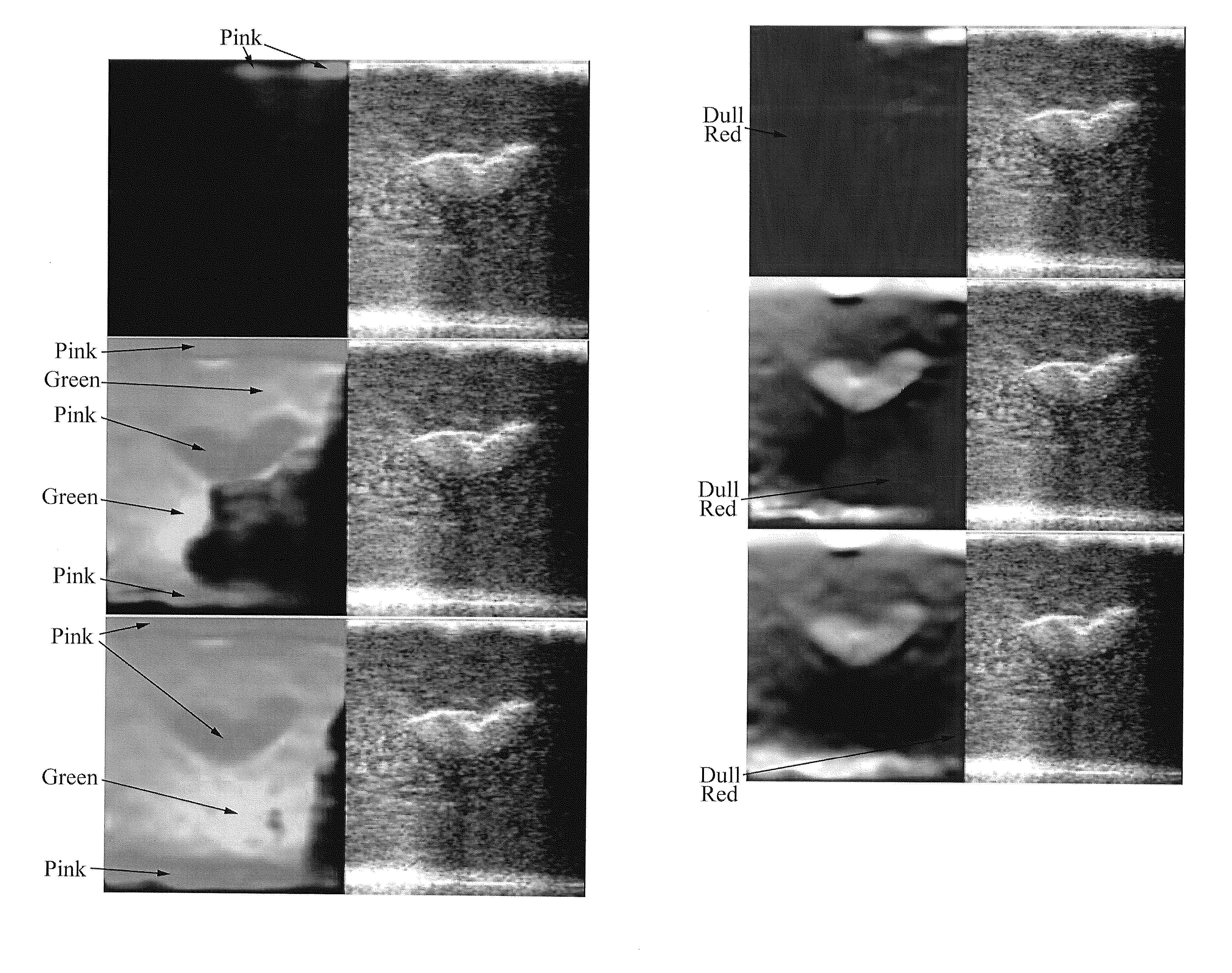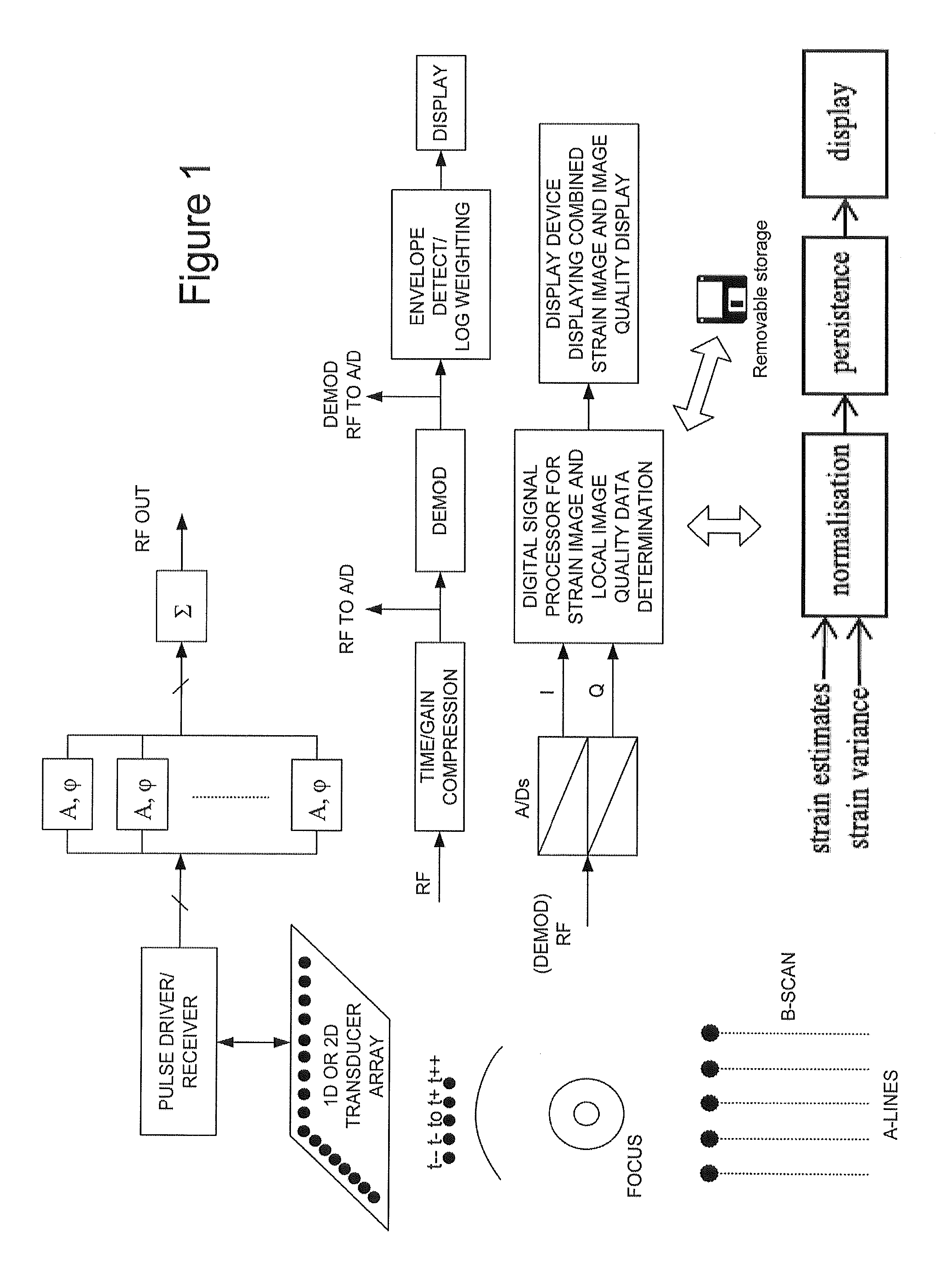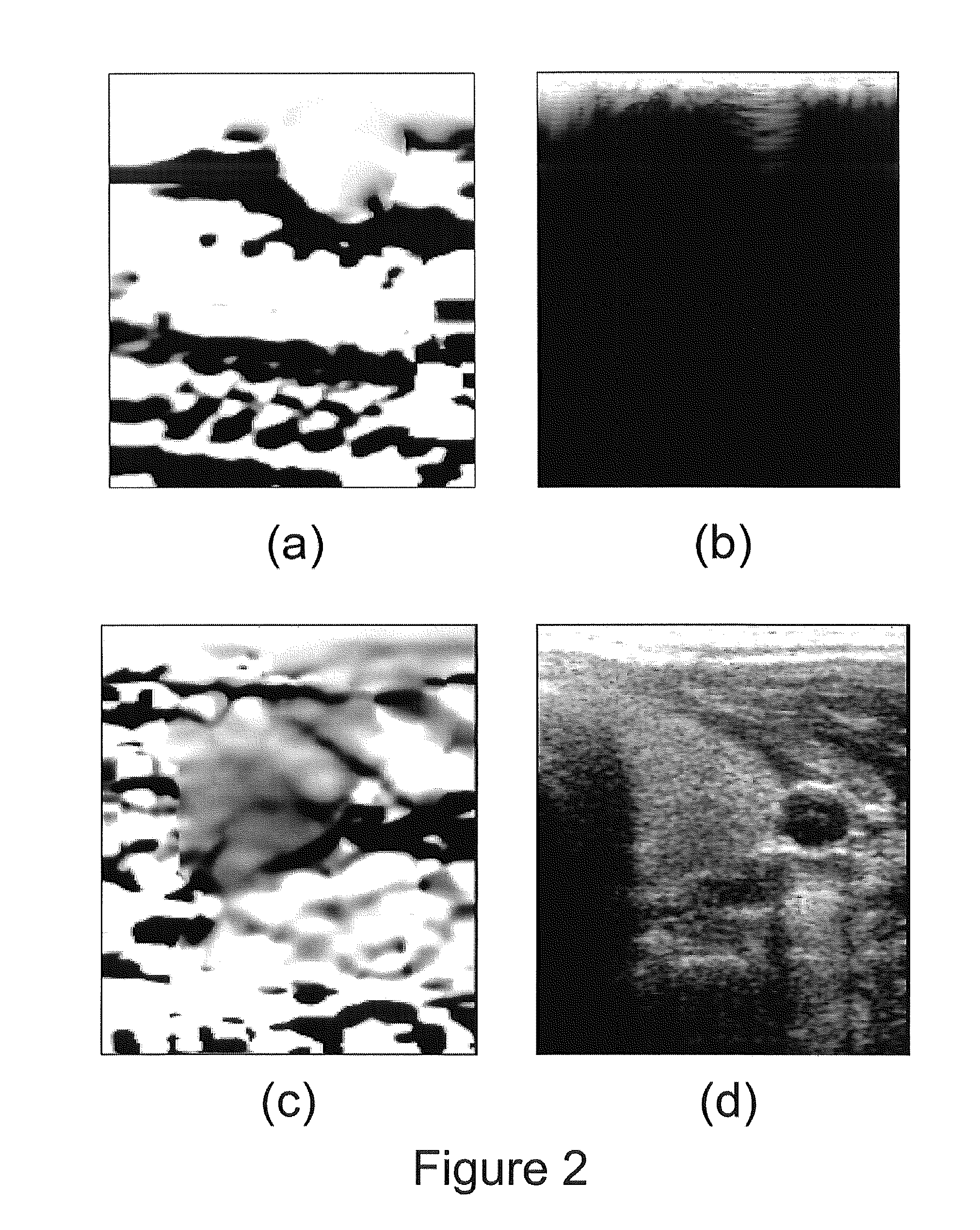Strain Image Display Systems
a display system and image technology, applied in the field of strain image display system, can solve the problems of increasing the computational cost of improvement, affecting the interpretation of data, and affecting the quality of data, so as to improve the interpretability of the display and improve the quality of data
- Summary
- Abstract
- Description
- Claims
- Application Information
AI Technical Summary
Benefits of technology
Problems solved by technology
Method used
Image
Examples
Embodiment Construction
[0047]Broadly, we will describe an interface for freehand strain imaging, which has been designed to support clinical trials investigating the potential of ultrasonic strain imaging for diagnostic purposes across a broad range of target pathologies. The aim with this interface is to make scanning easier, and to help clinicians learn the necessary scanning technique quickly, by providing real time feedback indicating the quality of the strain data as they are produced. The images are also easier to interpret, because data at unacceptably low signal-to-noise ratios do not reach the display. The main components of the interface are novel normalisation, persistence and display methods. These not only present data in a more meaningful format, but the level of noise in the displayed images may actually be reduced compared to other methods that use the same strain estimates with the same level of persistence.
[0048]FIG. 1 shows an outline block diagram of an ultrasonic imaging system config...
PUM
 Login to View More
Login to View More Abstract
Description
Claims
Application Information
 Login to View More
Login to View More - R&D
- Intellectual Property
- Life Sciences
- Materials
- Tech Scout
- Unparalleled Data Quality
- Higher Quality Content
- 60% Fewer Hallucinations
Browse by: Latest US Patents, China's latest patents, Technical Efficacy Thesaurus, Application Domain, Technology Topic, Popular Technical Reports.
© 2025 PatSnap. All rights reserved.Legal|Privacy policy|Modern Slavery Act Transparency Statement|Sitemap|About US| Contact US: help@patsnap.com



